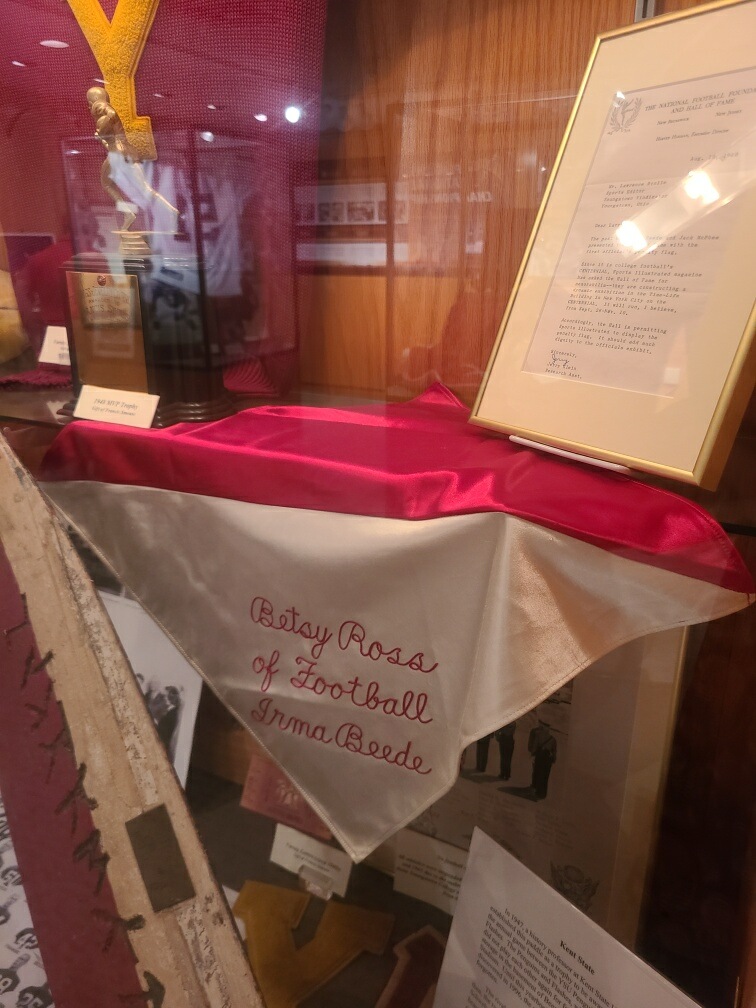By Yousof Hamza
Youngstown is home to many small pieces of history with lasting impacts on society. One of those is a small, yellow piece of cloth with a little weight attached to it: the penalty flag.
First used Oct. 16, 1941, in a game between then-Youngstown College and Oklahoma City University, it was meant to ease confusion on the football field in an era where it was just fish horns and hand signals.
The penalty flag was the brainchild of former Youngstown State University head coach Dwight “Dike” Beede and his first wife Irma Beede. She sewed four red-and-white-striped cloths out of their daughter’s old Halloween costume.
The flags helped streamline the game and gave the audience visual cues as to what was happening on the field. This led to it being adopted by the American Football Coaches Association for game use in 1948.
The use of the flags was agreed on by Beede, former OCU head coach Os Doenges and former game officials Hugh McPhee, Jack McPhee, Bill Renner and Carl Rebele.
“Through the use of the signal flag, everyone in the stadium knows that something is wrong. It’s been a big help,” Jack McPhee said through YSU sports information.
Jack McPhee carried the flags with him for use in other contests that season, including several Ohio State University games. This led up to its use in that season’s Rose Bowl where the flag was used in front of over 100,000 spectators.
YSU retains two of the original flags in its Thomas F. Mosure Hall of Gridiron Glory on the fourth level of Stambaugh Stadium.
